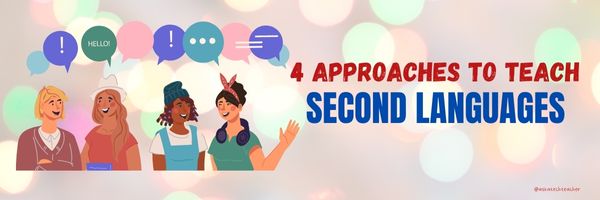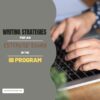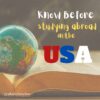Category: International
The Importance of Technical Translation Services
When most people want to translate a page, the easy solution is right-click and select “Translate” from the drop-down menu. Or, they might go to Google’s free “Translate” service. But there are a lot of reasons those may not be good choices. They aren’t particularly accurate with contextual understanding and they may not be as secure as you need. For critical translations or professional content, a specialized translation service is a better choice.
The Ask a Tech Teacher team checked into this and came up with some ideas:
The Importance of Technical Translation Services
Technical translation services are vital, especially for a global business. They will allow you to easily tap into international markets as you will be able to provide more accurate translations. These translations may be of manuals, instructions, patents, or product information.
In this article, we’ll give you a comprehensive overview of the importance of technical translation services. (more…)
Share this:
- Click to share on Facebook (Opens in new window) Facebook
- Click to share on X (Opens in new window) X
- Click to share on LinkedIn (Opens in new window) LinkedIn
- Click to share on Pinterest (Opens in new window) Pinterest
- Click to share on Telegram (Opens in new window) Telegram
- Click to email a link to a friend (Opens in new window) Email
- More
4 Approaches to Effective Second-Language Teaching
Learning a second language for many is complicated. Some of us are naturals at linguistics, others, not so much. Teaching means adapting to different students who learn in different ways. Here are four proven approaches, from the Ask a Tech Teacher crew:
4 Approaches to Effective Second-Language Teaching
In an article from the Michigan State University website, children who are skilled in at least two languages are known to possess cognitive flexibility. This allows them to focus on one task and effectively switch to another task. It’s not surprising for parents to want their kids to learn a new language. Training them is another story, one that second language teachers will need to handle.
Generally, there is no one effective approach to teaching a second language, which could be challenging given the individual differences and backgrounds of learners in a classroom. All it takes is knowing the strategies that help them attain full mastery of a target language. Check out the list below and see what approaches will aid you in teaching a second language:
Share this:
- Click to share on Facebook (Opens in new window) Facebook
- Click to share on X (Opens in new window) X
- Click to share on LinkedIn (Opens in new window) LinkedIn
- Click to share on Pinterest (Opens in new window) Pinterest
- Click to share on Telegram (Opens in new window) Telegram
- Click to email a link to a friend (Opens in new window) Email
- More
IB Extended Essay Tips
Many students dread IB essays. But with the right approach, you can make the procedure exciting. Read how to draft an IB extended essay below
Writing Strategies for an Extended Essay in the International Baccalaureate Program
IB is a rigorous two-year project for personal and academic development. In the end, you receive a globally recognized IB diploma. But like all educational qualifications, it involves various intricate processes. One of them is the extended essay. It is mandatory for all students and is an independent piece of research that culminates into a 4,000-word paper. The paper provides an opportunity to investigate a topic of interest. However, more importantly, it contributes to the overall diploma grade. Let us show you some tips to help you draft a well-written piece.
Understanding the Requirements as a Key to Success in IB Extended Essay Writing
One of the mistakes university students make is ignoring the extended essay brief or paying little attention to the requirement. It is worse for distance learning since no one is around to offer guidance. But even the pros and cons of remote learning are intertwined. So, right off the bat, avoid this pitfall. The IB sets criteria and guidelines for the write-up. The requirements guide discussions to ensure the article meets the standards for successful research. Some of them include citation guidelines, research question formulation, word count, etc.
Share this:
- Click to share on Facebook (Opens in new window) Facebook
- Click to share on X (Opens in new window) X
- Click to share on LinkedIn (Opens in new window) LinkedIn
- Click to share on Pinterest (Opens in new window) Pinterest
- Click to share on Telegram (Opens in new window) Telegram
- Click to email a link to a friend (Opens in new window) Email
- More
Here’s What to Know Before Studying Abroad in the US
While it’s become common for US students to study abroad, it is just as common for non-Americans to spend time studying in the US. If you live outside the US and are interested in study in America, here are some hints for how to make it happen, from one of our Ask a Tech Teacher contributors:
- Where to apply
- What to study
- Type of Student Visa
- Working while studying
- Wrap up
Things to Know Before Studying Abroad in the U.S.
The United States is one the most popular study destinations for overseas students, boasting academic prowess and cultural richness. Since America is so broad and diverse, it is a perfect place for overseas students.
You will be incorporated into a welcoming environment and will have the opportunity to experience different cultures while meeting individuals from over the world. Whether you want to work in the United States post-graduation or return to your native country, a US degree will expand your horizons and broaden your prospects.
If you’re looking forward to studying in the US but don’t know where to start, you can check out some courses at American International to see what interests you. Additionally, here are some things you should know before applying to any college or university in America:
Where to Apply
The United States is home to over 4,000 institutions for higher studies. You will also find that the US dominates world rankings of top 100 universities, with more than half of its institutions on that list. These also include eight prestigious universities, known as the Ivy League, that come under the top 10 universities in the world. The UK comes in second on the list.
With many colleges having different types and expenses and demanding applications, numerous overseas students may find studying in the United States daunting. Aside from the most prestigious and well-known institutions, the United States offers a diverse range of quality universities with varying values, aims, teaching styles, and fee structures.
The Wall Street Journal or Times Higher Education College Rankings may help you assess universities based on engagement, contact with professors, and general student experience. This will assist you in choosing the one that is most suited to your budget, interests, and goals. There are also several community colleges, public universities, and government-funded institutes with low tuition fees and great scholarship programs that you can apply to.
Share this:
- Click to share on Facebook (Opens in new window) Facebook
- Click to share on X (Opens in new window) X
- Click to share on LinkedIn (Opens in new window) LinkedIn
- Click to share on Pinterest (Opens in new window) Pinterest
- Click to share on Telegram (Opens in new window) Telegram
- Click to email a link to a friend (Opens in new window) Email
- More
What to Know Before Studying in the UK
Studying overseas is becoming more popular than ever. The Institute for International Education of Students (IES) explained why based on a survey they conducted to explore the long-term impact of study abroad on the personal, professional, and academic lives of students. Here are some interesting findings:
95% of the students who were surveyed admitted that studying abroad served as a catalyst for increased maturity
96% reported increased self-confidence
95% said it had a lasting impact on their worldview.
Ask a Tech Teacher contributor, Ryan Hill, has an interesting discussion on how to study in the UK if you don’t live there:
First, if you’re interested in studying abroad in the UK, you’ll want to know the process before coming to the UK. As with any country, there are certain etiquette rules that you should be aware of. You should also know the differences between pants and trousers, but we will leave it up to you to figure this one out. The UK is a highly diverse country with many countries represented among its citizens. In addition to the vast cultural diversity, the UK is home to many unique landmarks and experiences.
There are many amazing places to study in the UK such as Reading, Oxford, Cardiff and many more cities. The UK has become a hub of amazing universities and student accommodation for them. This is unrivalled amongst many countries, and a top destination for international students.
How to Apply to Study in the UK
To begin the application process, you’ll want to find out if you qualify to apply for UK student loans and grants. UCAS provides guidance for searching for courses and will give you a unique reference number to keep safe. The next step is to choose a university. Choose a university based on location, accommodation, and the amenities it offers. Remember that you can apply to five different universities on one application form. Then, you can take a gap year if you’re unable to secure a place at a university straight away. In the UK it is far more common for students to take a year out and reapply for university, so do not feel you are missing out by waiting a year.
Share this:
- Click to share on Facebook (Opens in new window) Facebook
- Click to share on X (Opens in new window) X
- Click to share on LinkedIn (Opens in new window) LinkedIn
- Click to share on Pinterest (Opens in new window) Pinterest
- Click to share on Telegram (Opens in new window) Telegram
- Click to email a link to a friend (Opens in new window) Email
- More
4 Long-Term Benefits of Bilingual Education
This is such a great article on the benefits of bi-lingual education. Sure, we intuitively know what these are, but what are the real metrics? From an educator with a passion for her calling, see if you have any reasons you’d add:
4 Long-Term Benefits of Bilingual Education
Raising bilingual children is the norm in Singapore. From an early age, the children living in this multicultural city are exposed to a number of languages at home, in their preschools, and in their communities. At the same time, the government here has adopted a bilingual policy wherein students are required to gain proficiency in English and their respective ethnic mother tongue, which is Mandarin for the Chinese*, Malay for the Malay, and Tamil for the Indians. If you’re staying in the country with your family for work, it’ll be a breeze to find a bilingual program that will provide your children with the right environment for improving their language proficiency. These schools can focus on your mother tongue, English, as well as other languages that your child might be interested in acquiring. With the assistance of the right bilingual program and teachers, your child will have a better chance of acquiring, retaining, and deftly using multiple languages.
The beauty of bilingual education is that it presents students with immediate as well as long-term benefits, many of which the children can utilize even as they find their places as productive members of the workforce and society at large. Here are some of the advantages of having your child undergo a bilingual education program and how they can benefit from it in the coming years.
Share this:
- Click to share on Facebook (Opens in new window) Facebook
- Click to share on X (Opens in new window) X
- Click to share on LinkedIn (Opens in new window) LinkedIn
- Click to share on Pinterest (Opens in new window) Pinterest
- Click to share on Telegram (Opens in new window) Telegram
- Click to email a link to a friend (Opens in new window) Email
- More
Tech Tip #172: Translate Webpages In a Second
 This is not part of the 169 tech tips for your class book but it will be when I update the ebook:
This is not part of the 169 tech tips for your class book but it will be when I update the ebook:
Tech Tip #172: Translate Webpages in a Second
Over the years, I get more and more views on this blog from non-English-speaking nations. I always drop in to visit and no surprise, their blogs are in their native language (as mine is). Sometimes they have the Translate feature, but not always. That stymied me for a long time. I had to copy the text into another webpage to translate it.
Then I discovered this.
To translate a webpage:
Right click on the page
Select ‘Translate’
A box pops up and you select your language.

Here’s a before and after:

It works with comments, too.
Ever since, I’ve gotten even more international visitors. I’m thrilled with that. (Note: This is in Chrome. It may not work the same in Firefox or Edge).
Share this:
- Click to share on Facebook (Opens in new window) Facebook
- Click to share on X (Opens in new window) X
- Click to share on LinkedIn (Opens in new window) LinkedIn
- Click to share on Pinterest (Opens in new window) Pinterest
- Click to share on Telegram (Opens in new window) Telegram
- Click to email a link to a friend (Opens in new window) Email
- More
International Education During the Pandemic
Ask a Tech Teacher contributor, Christian Miraglia, a passionate educational consultant for T4Edtech, traveled to Italy and surrounding areas and has some interesting insights into their education efforts during the pandemic:
From An Italian Train: Education during the Pandemic
 I recently returned from a long-awaited trip to Italy in which I spent a considerable amount of time traveling throughout the Tuscany, Umbria, and Lazio provinces. During the first week of travels, I spoke with an educator from Argentina traveling through Europe. The topic of teaching and technology during the pandemic arose. We discussed how the pandemic affected students, parents, and teachers alike in the United States and Argentina. As an educator, he worked in the Office of Education Ministry and thus had a broad view of the pandemic’s impact on Argentina. As we shared our experiences from the past year, two common themes arose.
I recently returned from a long-awaited trip to Italy in which I spent a considerable amount of time traveling throughout the Tuscany, Umbria, and Lazio provinces. During the first week of travels, I spoke with an educator from Argentina traveling through Europe. The topic of teaching and technology during the pandemic arose. We discussed how the pandemic affected students, parents, and teachers alike in the United States and Argentina. As an educator, he worked in the Office of Education Ministry and thus had a broad view of the pandemic’s impact on Argentina. As we shared our experiences from the past year, two common themes arose.
First, students of low socio-economic status bore the brunt of the pandemic. There was a significant problem in Argentina with access to instruction because of connectivity, which was also endemic to the community I served here in the states. Reliable access was such a problem in Argentina that students did not even bother to attend classes. The issue was so severe that institutions could not track the number of students disconnected from the daily educational process. One can only predict the long-term impact of student absenteeism in the foreseeable future. Continuing my travels in Italy, I wondered how the pandemic affected the Italian nation’s educational systems?
As it was, Italy also had similar issues with distance learning. In a comprehensive article written for BMC Public Health Distance learning in Italian primary and middle school children during the COVID-19 pandemic: a national survey, the study revealed gaps in access. Even though over 80% of students had access to some device, connectivity problems still impacted underserved communities. Additionally, many of the affected students were from immigrant families where language barriers were already problematic. Italy’s problems mirrored those of the United States and Argentina in that the communities most affected by the pandemic were the most vulnerable. Although efforts to address the access issue took place, Italy faces the everyday struggle of allocating sufficient funds to upgrade the infrastructure to guarantee access for all students.
Share this:
- Click to share on Facebook (Opens in new window) Facebook
- Click to share on X (Opens in new window) X
- Click to share on LinkedIn (Opens in new window) LinkedIn
- Click to share on Pinterest (Opens in new window) Pinterest
- Click to share on Telegram (Opens in new window) Telegram
- Click to email a link to a friend (Opens in new window) Email
- More
How To Move To Canada To Be A Teacher
Here’s a great article from an Ask a Tech Teacher contributor for those of you interested in teaching internationally–specifically, Canada:
How To Move To Canada To Be A Teacher
 Canada is a country that people all over the world would love to emigrate to. It has a progressive style of government, very low crime rate and lots of work. It is not easy to get there, however. Since there are so many people trying to get into Canada, the requirements can be quite strict.
Canada is a country that people all over the world would love to emigrate to. It has a progressive style of government, very low crime rate and lots of work. It is not easy to get there, however. Since there are so many people trying to get into Canada, the requirements can be quite strict.
That said, there are professions that are in demand and the Canadian government is active in trying to get people to come and do these jobs. There are times when the teacher profession is on the list.
If you have the right credentials then you could end up on a plane destined for Canada. You’ll need to have your health insurance sorted out while you look for a job. Public health insurance in Canada is for citizens and permanent residents.
With all that said, let’s get into the ways you can get to Canada to work as a teacher and then sort those details out afterward.
Pick the right city
There isn’t a nationwide shortage of teachers, but there are areas that are having trouble finding enough. There are rural areas where the most eligible people are moving to cities. Then, there are the cities that are growing faster than ever and with families moving in there is a need for more teachers.
The trick is to first think about what type of lifestyle you want to live and then find the area that best suits it. For instance, Saskatoon is one of the fastest growing cities in Canada and is in dire need of teachers. It sits midway between Edmonton and Winnipeg so you have to like it in a rural area. If that type of scenario suits you then you are likely to find a job there.
For those that enjoy urban and city life, Guelph, Ontario is always looking for qualified teachers. It isn’t far from Toronto and has smaller cities like Kitchener and Hamilton nearby.
Even Toronto, the New York City of Canada is always looking for teachers so there really is a mix of different types of places that suit every lifestyle.
Share this:
- Click to share on Facebook (Opens in new window) Facebook
- Click to share on X (Opens in new window) X
- Click to share on LinkedIn (Opens in new window) LinkedIn
- Click to share on Pinterest (Opens in new window) Pinterest
- Click to share on Telegram (Opens in new window) Telegram
- Click to email a link to a friend (Opens in new window) Email
- More
Education in Kosovo
I had an opportunity to chat with Doruntina Alshiqi about the education system in Kosova. I love hearing how learning is accomplished around the world. It reminds me that we live in a bubble, thinking our approach is great but often, other systems work just as well. I found it fascinating to hear Doruntina’s experience. I think you will too.
***
 Primary education is provided for students here. It consists of schooling from grade one through five. This is a requirement by law for all children and students enroll at the age of six. The second component of education is the lower secondary educational system, which is usually for teens around 12 to 15 years of age. It provides education through grade nine. This is publicly funded and free of charge.
Primary education is provided for students here. It consists of schooling from grade one through five. This is a requirement by law for all children and students enroll at the age of six. The second component of education is the lower secondary educational system, which is usually for teens around 12 to 15 years of age. It provides education through grade nine. This is publicly funded and free of charge.
From here, students move on to secondary education. This is either professional education or general education. Most students spend three to four years at this level. This level of education is not a requirement under law, though. Most students who enroll in it do so to learn trades and skills that they will use to build their careers and lives with. These schools have a goal to prepare students for vocational work directly out of school or to prepare them to enter university.
Higher Education in Kosovo
Much of the country is rebuilding and reorganizing. This includes the educational system in the country. Universities and educational institutions provide higher education in Kosovo. Both private and public schools are available here at this level. Students are able to earn an associate’s degree, which generally takes under two years to complete in a specialized area of study, a bachelor’s degree, which takes between three and four years to complete, or a masters degree, which can add an additional two to three years of education on. Post graduate education to earn a PhD is also available. Many students enroll in these programs part time, though full time education is still widely available as well.
It is important to note that many of the schools, under the guidance of the Ministry of Education, Science, and Technology is being altered. The goal is to align the educational system along the lines of other European countries.
Share this:
- Click to share on Facebook (Opens in new window) Facebook
- Click to share on X (Opens in new window) X
- Click to share on LinkedIn (Opens in new window) LinkedIn
- Click to share on Pinterest (Opens in new window) Pinterest
- Click to share on Telegram (Opens in new window) Telegram
- Click to email a link to a friend (Opens in new window) Email
- More
















































